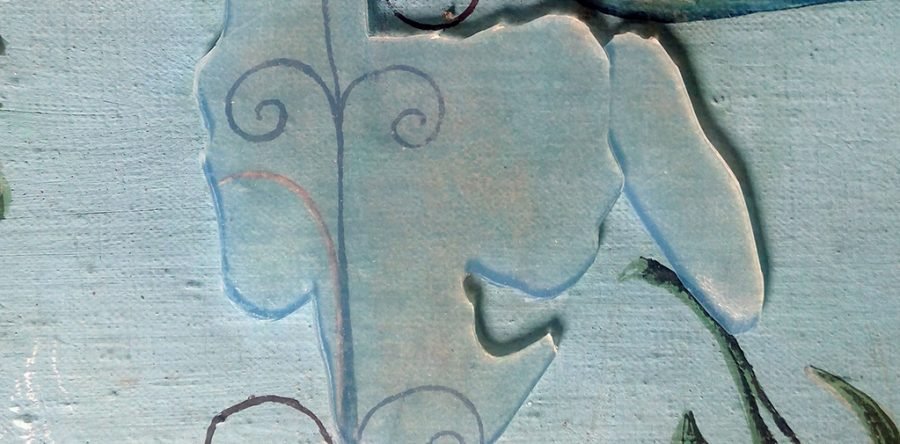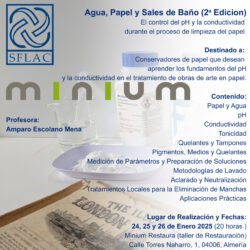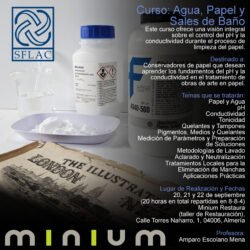Are agarose gels a real tool in our art conservation stockpile? Yes, it is. This is because of how easy it is to use, the control it provides, and the high efficiency of the strong capillary action.
Agarose preparation is stress free, it is simply the process of mixing it with water at the required proportion for each particular case, heating it in the microwave at short intervals, and stirring between them until the temperature needed for the gelling is reached. Some sources recommend allowing the prepared agarose gel to cool down until it hardens, and re-melting it again for a better and more uniform gel formation. Click here for a Getty - Chris Stavroudis short video on how to prepare it.
Depending what it is going to be used for, Agarose can be prepared with plain distilled water or with a buffered cleaning solution prepared at the proper pH, conductivity, and with the adequate chelator for our purposes.
In the particular case shown above, we were treating a painting on canvas. The owner did not want to clean it, since he liked the “rustic” look that the painting had. On the other hand, he wanted to get rid of the disturbing stain. These constraints made the treatment difficult, since we were required to “clean without cleaning.” The preliminary tests told us that either solvents or water could easily solubilize the paint layer, so at that point we were left with very little alternatives for the treatment and we decided to try an agarose gel. We performed some tests to measure the conductivity, pH, and wettability of our surface, as well as to see the efficiency of Richard Wolbers cleaning solutions. The results were promising, and we decided to go ahead with the treatment.
We casted an agarose sheet at the required percentage and with the selected cleaning solution. Once we had it ready, we trimmed it to the necessary shape for the stain and positioned it on top, taking care to eliminate any air bubbles underneath. We allowed it to act for 15 minutes and removed it to see the residues left on the agarose and the results. Since the surface appeared wet, we needed to allow it to completely dry before deciding how to continue the treatment. Once the surface was dry, we observed that some areas of the stain were already cleaned while some others still showed signs of soiling and needed further treatment. We again trimmed the agarose to the new shape and applied it again on top of the stain. We kept working at ten-minute intervals continuously moving and trimming the edges of the agarose shape, avoiding the formation of strong cleaning lines. Remember that the client did not want to clean the painting, it was just about removing the stain! Once we were happy with the results, we applied a new agarose sheet prepared with a rinsing solution to remove any chelators or solubilized degradation products.
This is how we applied Agarose gels to this particular case, but each new situation will require you to develop the best procedure for the project’s constraints.
In conclusion, agarose gels are definitely one more gadget to include in our current practice as conservators. It is easy to handle, gives us a lot of control over the treatment and it can be really helpful
both overall and spot treatments. However, one needs to be sure that it is the appropriate tool for the case, and when it is, we strongly recommend it!
Bibliography:
Angelova, Lora V., et al. Gels in the Conservation of Art. Archetype Publications, 2017.
Wolbers, R. (2003). Cleaning painted surfaces aqueous methods. London: Archetype Publications.
Maitland, Crystal. “Gels in the Conservation of Art.” Journal of the American Institute for Conservation, vol. 57, no. 4, 2018, pp. 229–230.










8 Responses